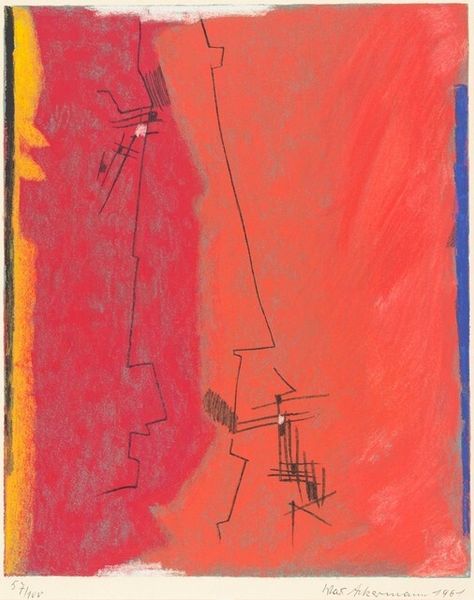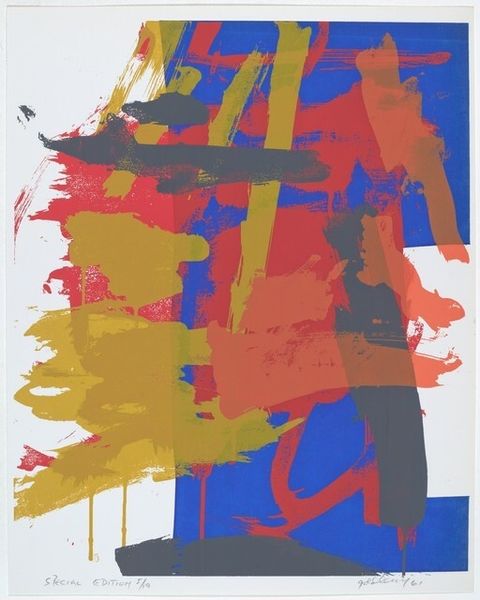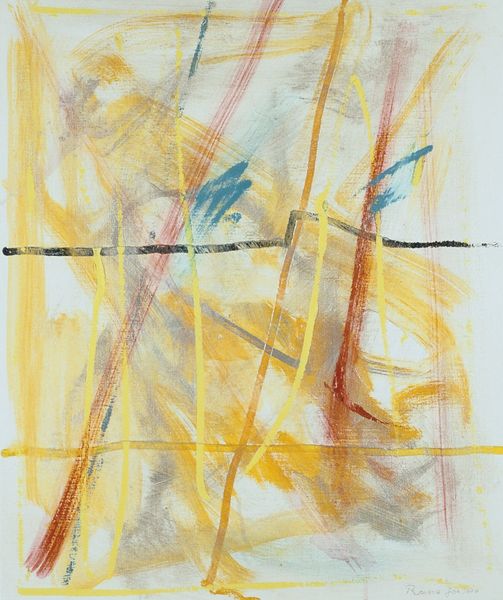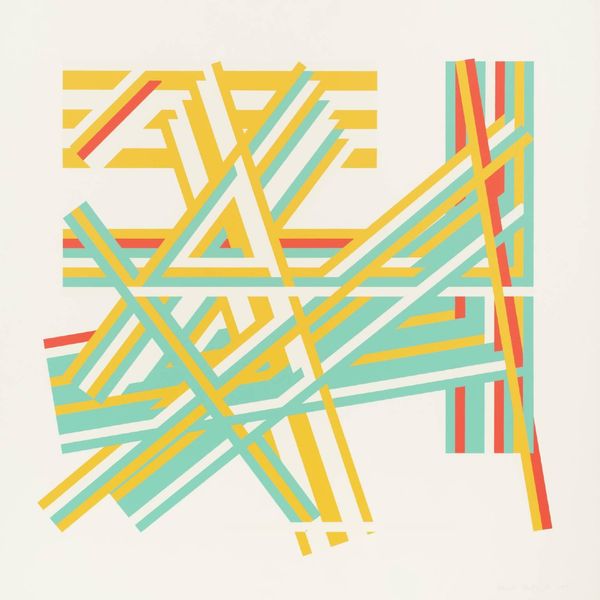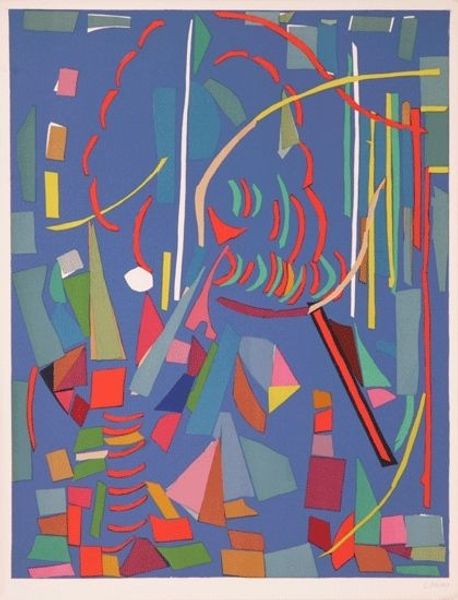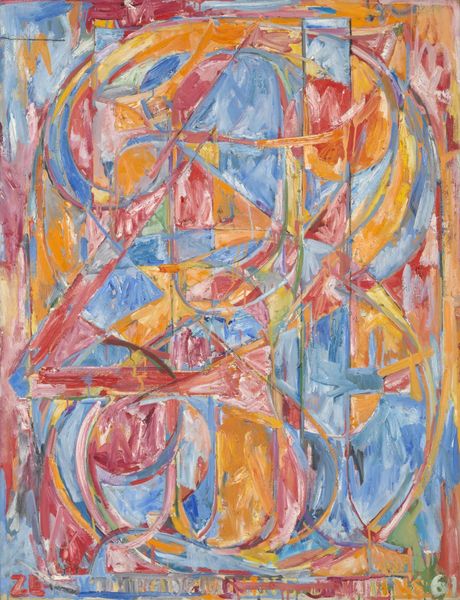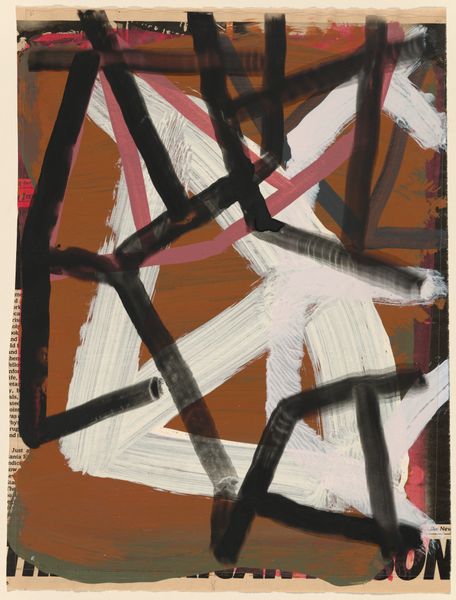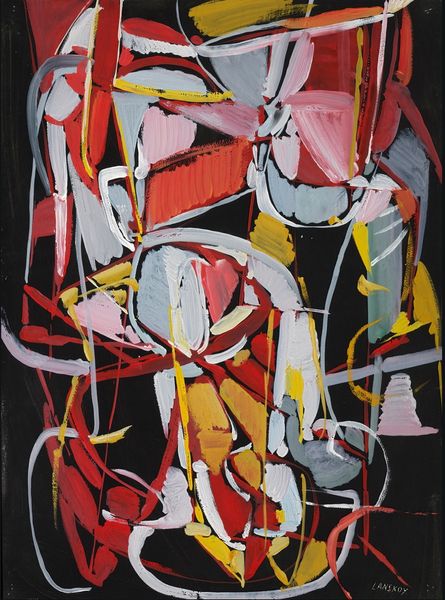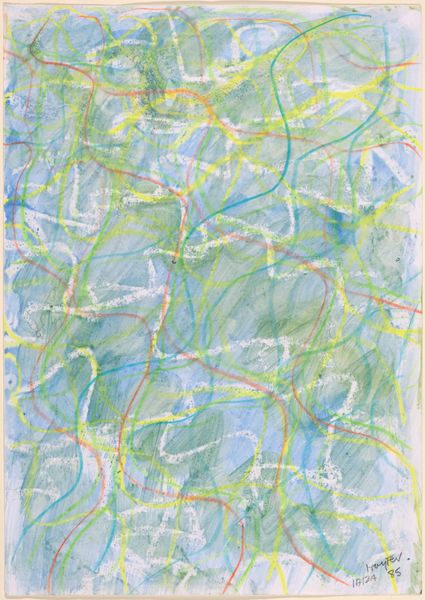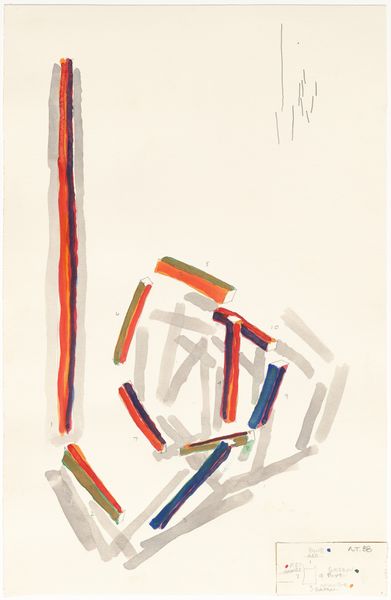
Dimensions: sheet: 43.2 × 33.3 cm (17 × 13 1/8 in.)
Copyright: National Gallery of Art: CC0 1.0
Curator: Here we have Stanley William Hayter's "Construction IV," a drawing created in 1979. Editor: Immediately, I’m struck by its energetic dynamism. The intersecting lines and the vibrant yellow background create a real sense of movement. It almost feels as if the structure is leaping off the page. Curator: Absolutely. Hayter was deeply invested in the expressive potential of line. Notice how he builds up this composition using layered lines, varying the colors and densities to create depth and tension. Editor: Yes, the overlaid geometric shapes feel like an attempt to grapple with themes of architectural design, which in turn is always culturally loaded. It uses familiar forms, like triangles and rectangles, as symbols—or maybe a coded alphabet reflecting an interest in how meaning is generated through images and architectural design in general. Curator: That's interesting, because these lines are not merely descriptive, but generative. I would argue that Hayter employs them almost as independent agents, investigating their capacity to define form and space. Editor: It's also evocative—all these colors together certainly provoke an emotional response! It might remind some people of mid-century modernism's bold optimism. Were these geometric shapes commonly used for symbolic architectural purposes? Curator: Well, abstract expressionism generally was rooted in pure emotional content. While recognizable geometry is visible, Hayter prioritized his expressive capabilities in favor of deeper or referential imagery. These are tools and formal exercises rather than symbolic artifacts in and of themselves. Editor: This makes me question how intentional his abstraction was at depicting structural architecture on the conceptual level; It’s also not to be said the line quality lends itself well as one foundation of graphic symbolism… Curator: Precisely. We should not overlook its emotional impact as merely a representational endeavor of architecture. Editor: Yes, and perhaps we viewers get to supply the symbolism as we grapple with all the lines at play, giving even more insight to the intent that drives all such creativity in art and symbolic forms! Curator: That’s well said. Hopefully we've helped unlock a new pathway for appreciation for this interesting exploration from Stanley Hayter.
Comments
No comments
Be the first to comment and join the conversation on the ultimate creative platform.
